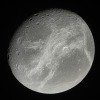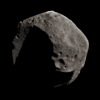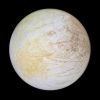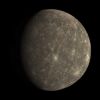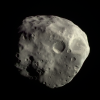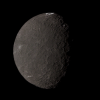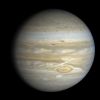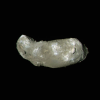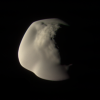Emily Lakdawalla • Dec 09, 2009
Planetary Society Advent Calendar for December 9: Atlas
Here's another weird-looking one, though it's less weird from this particular, polar point of view than it is when viewed from the side. Atlas orbits Saturn just outside the A ring. But like the moons that orbit within the ring system (namely, Pan and Daphnis), Atlas' shape is also powerfully influenced by the rings. All three of these moons appear to have collected a large amount (relative to the size of the moons, that is) of ring material in a dusty deposit built up at the moons' equators, giving all three of them a flying-saucer-like shape. Being the farthest from Saturn and also, at 32 kilometers in diameter, the largest of the three, Atlas is the one that has been photographed in the most detail by Cassini, including this view from below, taken on June 12, 2007.

Each day in December I'm posting a new global shot of a solar system body, processed by an amateur. Go to the blog homepage to open the most recent door in the planetary advent calendar!
Let’s Go Beyond The Horizon
Every success in space exploration is the result of the community of space enthusiasts, like you, who believe it is important. You can help usher in the next great era of space exploration with your gift today.
Donate Today

 Explore Worlds
Explore Worlds Find Life
Find Life Defend Earth
Defend Earth


